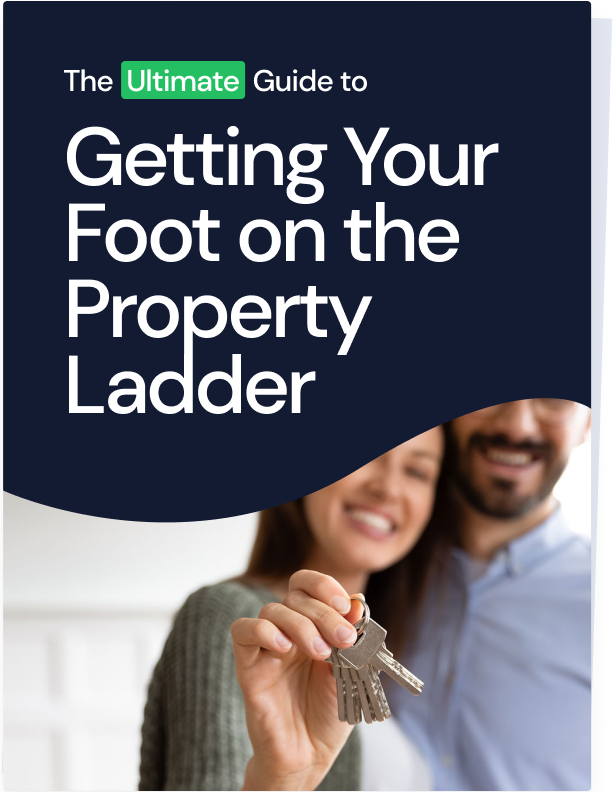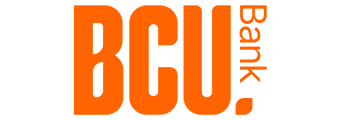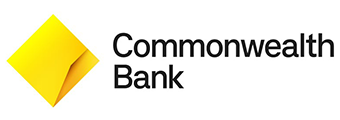For people who feel like property prices are escalating faster than their deposit savings, applying for a 95% loan-to-value ratio (VLR) home loan can be one option.
What is a 95% LVR home loan?
In simple terms, a 95% LVR home loan means the borrower has a 5% deposit and borrows the remaining 95% of the cost of the home from a lender. Loan-to-value ratio - or LVR - refers to the loan amount versus the value of the property that's being purchased.
So, on a $700,000 property, a 5% deposit is $35,000 with a lender providing a loan of $665,000 - a loan-to-value ratio of 95%.
Our loan-to-value ratio calculator can give you an idea of how LVRs work.
The gold standard LVR for a home loan is generally 80% so in the case of a $700,000 property, this would equate to a $120,000 deposit. But many lenders recognise it can be difficult for homebuyers to come up with the hundreds of thousands of dollars needed for a 20% deposit, particularly first homebuyers in capital city markets.
This is where 95% LVR home loans can come into play.
How common are 95% LVR home loans in Australia?
Before the Global Financial Crisis of 2007-09 and later the Hayne Royal Commission of 2018-19, it wasn't uncommon for lenders to routinely offer high LVR home loans. However, 95% LVR is about the maximum you'll be able to find on the mainstream lending market these days.
See also: Is it possible to buy a home with no deposit?
Home loans with 95% LVRs (and up to 98%) are also available under the federal government's Home Guarantee Scheme to some eligible home buyers.
It's worth checking your eligibility for these schemes before you look to the mainstream lending market.
See also:
Which lenders offer 95% LVR home loans in Australia?
Many major Australian lenders, including the big four banks, Macquarie Bank, Bendigo & Adelaide Bank, and Bank of Queensland offer 95% LVR home loans. They are also offered by many non-bank and specialist lenders.
While some lenders may choose not to deal in high LVR loans, there are many that do.
Finding the best 95% LVR home loan
If you're thinking a 95% home loan might be a good option for you, it's important to secure the lowest possible interest rate and the terms and conditions that are going to best suit your circumstances. The table below features some of the lowest rate 95% LVR (5% deposit) home loans on the market.
| Lender | Home Loan | Interest Rate | Comparison Rate* | Monthly Repayment | Repayment type | Rate Type | Offset | Redraw | Ongoing Fees | Upfront Fees | Max LVR | Lump Sum Repayment | Extra Repayments | Split Loan Option | Tags | Features | Link | Compare | Promoted Product | Disclosure |
|---|---|---|---|---|---|---|---|---|---|---|---|---|---|---|---|---|---|---|---|---|
5.49% p.a. | 5.50% p.a. | $2,836 | Principal & Interest | Variable | $null | $null | 95% | |||||||||||||
5.79% p.a. | 5.81% p.a. | $2,931 | Principal & Interest | Variable | $0 | $195 | 95% | |||||||||||||
5.79% p.a. | 5.82% p.a. | $2,931 | Principal & Interest | Variable | $0 | $300 | 95% | |||||||||||||
6.09% p.a. | 6.37% p.a. | $3,027 | Principal & Interest | Variable | $295 | $0 | 95% | |||||||||||||
6.15% p.a. | 6.15% p.a. | $3,046 | Principal & Interest | Variable | $0 | $0 | 95% | |||||||||||||
6.24% p.a. | 6.59% p.a. | $3,075 | Principal & Interest | Variable | $0 | $0 | 95% | |||||||||||||
6.29% p.a. | 6.31% p.a. | $3,092 | Principal & Interest | Variable | $0 | $210 | 95% | |||||||||||||
6.24% p.a. | 6.28% p.a. | $3,075 | Principal & Interest | Variable | $0 | $0 | 95% | |||||||||||||
6.64% p.a. | 7.03% p.a. | $3,207 | Principal & Interest | Variable | $395 | $350 | 95% | |||||||||||||
6.49% p.a. | 6.87% p.a. | $3,157 | Principal & Interest | Variable | $0 | $0 | 95% | |||||||||||||
6.69% p.a. | 6.72% p.a. | $3,223 | Principal & Interest | Variable | $0 | $350 | 95% | |||||||||||||
6.69% p.a. | 6.93% p.a. | $3,223 | Principal & Interest | Variable | $248 | $350 | 95% | |||||||||||||
6.84% p.a. | 6.84% p.a. | $3,273 | Principal & Interest | Variable | $0 | $0 | 95% | |||||||||||||
7.24% p.a. | 7.61% p.a. | $3,407 | Principal & Interest | Variable | $null | $400 | 95% | |||||||||||||
7.24% p.a. | 7.61% p.a. | $3,407 | Principal & Interest | Variable | $10 | $150 | 95% | |||||||||||||
7.34% p.a. | 7.36% p.a. | $3,441 | Principal & Interest | Variable | $null | $400 | 95% |
See also: Which Lenders offer 90% LVR home loans?
Does LMI apply to all 95% LVR home loans in Australia?
Many 95% LVR loans routinely attract lenders mortgage insurance (LMI) (although not those taken out under the government's Home Guarantee Scheme). As a general rule, LMI applies to loans with a loan-to-value ratio over 80%.
Lenders mortgage insurance protects the lender against any losses they may incur if the borrower fails to make their home loan repayments. Although the insurance covers the lender, it's the borrower who pays for the lender's insurance policy. This can add thousands of dollars to the upfront costs of taking out a home loan.
Some lenders, such as Sucasa, do not charge LMI on loans up to 98% LVR for eligible borrowers purchasing eligible properties. Other lenders may also choose to waive LMI for select borrowers. While LMI is widely levied on home loans with LVRs greater than 80%, it can also depend on the policies of individual lenders.
See also: Which lenders offer low or no cost LMI?
Pros and Cons of 95% LVR home loans
Yet even with the added expense of LMI, for some, buying a home with a 5% deposit is a tempting prospect as it means they can get into the market sooner. This can be particularly appealing when property prices are rapidly escalating. But 95% LVR loans have their pros and cons.
Advantages of 95% LVR Home Loans
Less time taken to save for a deposit
Saving money for a traditional 20% deposit can be a long process. But saving for a deposit of only 5% effectively sees you reaching your target sooner. It also means some of the money you were intending for a larger deposit can be diverted to other assets or investments, such as shares, or an emergency fund that can be earning interest in a high-interest savings account or saving you interest off your mortgage by sitting in redraw or offset account.
Domain's First Home Buyer Report 2024 found it takes first home buyers almost seven years to save a 20% deposit for an 'entry level house' in the Sydney market. Saving 5% would theoretically take only a quarter of that time.
Get into market sooner
With less time required to save, you can own a property sooner and potentially start realising capital growth sooner. Seeing your home appreciate in value may even compensate for the cost of LMI and a potentially higher interest rate that is often applied to low-deposit home loans. (But, of course, capital growth can't be guaranteed.)
Refinance after you build up equity
Equity is essentially how much of the property's value belongs to you - that is, the value of your property minus what you owe on your mortgage. Chances are, after period of time, you could refinance with 20% equity under your belt and secure a more competitive home loan rate.
Disadvantages of 95% LVR Home Loans
Paying Lenders Mortgage Insurance (LMI)
LMI is a difficult-to-avoid insurance premium that increases in cost as the lender assumes more risk. On a 95% LVR home loan, the cost of lenders mortgage insurance will be substantial, and the expense will need to be taken into account when buying your home. According to Savings.com.au's LMI calculator, a 5% deposit on a $700,000 owner-occupied home could mean an LMI premium of more than $36,176 for a 30-year loan term.
Higher Interest Rates & More Interest Paid
As the lender assumes more risk, 95% LVR borrowers are likely to face considerably higher interest rates than borrowers with lower LVR home loans. As well, you'll be paying back 95% of the home's value (which attracts interest) so you're going to pay much more interest over a 30-year term than for lower LVR loans.
As an example, if you borrowed 95% for a $700,000 home at 6% interest over 30 years, you'd be up for an extra $214,000 in interest over the term of the loan than if you'd had a 20% deposit.
See also: Savings.com.au Mortgage Repayment Calculator
Larger Repayments
On top of that, you're also facing much larger monthly loan repayments. Using the same figures for a $700,000 home, a 95% LVR loan at 6% p.a. will see you pay almost $4,000 a month compared to around $2,900 a month for an 80% LVR loan - a difference of more than $1,100 a month. And that's calculated on both loans having the same interest rate which is unlikely in a marketplace where 95% LVR loans typically come with considerably higher interest rates.
Risk of Property Prices Going Backwards
Despite how strong Australian property markets may seem, there's no guarantee that property prices will always grow at the same rate. If home values were to drop, properties with higher LVR home loans are at greater risk of going into what's called negative equity. This is when you owe more on your home loan than the home is worth. While it's technically only a problem if you're going to sell, negative equity can be an unsettling feeling. Larger deposits act as a buffer to negative equity situations while higher LVR home loans can make borrowers more vulnerable should the property market face a downturn.
Should I take out a 95% home loan?
Certainly, 95% LVR home loans allow you to enter the property market quicker than if you were to continue saving for a 20% deposit, but you will likely have to put up with:
- Higher than average interest rates
- Higher fees
- Stricter lending criteria
This is to compensate for your perceived higher risk as a borrower. Also don't forget that borrowing more of the property's value means you'll be paying much more in interest over the life of the loan. For example, let's say you wanted to buy a $700,000 home, and find a home loan with no ongoing fees and an interest rate of 6%:
- Borrowing 80% of the property's value leads to monthly repayments of $3,608
- Borrowing 95% leads to monthly repayments of $4,284
In interest costs alone, that's an extra $98,000 you're paying over 25 years!
It's worth using our Mortgage Repayment Calculator to give you some idea of how much extra low deposit loans can cost you over the term of your loan.
The lower the deposit, the higher the LMI
LMI, or lenders mortgage insurance, is a fee tacked on by lenders when you borrow more than 80% of the property's value. But let's be clear, it's to protect your lender if you default on the loan, not you.
As you can see in the table below, the lower the deposit, the higher the LMI cost. A 95% home loan can add tens of thousands of dollars to your upfront home loan costs.
| Estimated Property Value | 95% LVR | 90% LVR | 85% LVR |
| $200,000 | $6,137 | $2,574 | $1,299 |
| $400,000 | $15,428 | $6,552 | $3,390 |
| $600,000 | $31,008 | $9,828 | $5,100 |
| $800,000 | $41,344 | $14,440 | $6,800 |
| $1,000,000 | $51,680 | $20,790 | $10,115 |
Source: Savings.com.au Lenders Mortgage Insurance Calculator. Prices provide an estimate only and are based on a 30-year loan term.
Savings.com.au's two cents
There are many home loans on the market for buyers with 5% deposits, including from major lenders. But before you dive in, it pays to check your eligibility for government schemes, grants, and stamp duty concessions that may help you avoid lenders mortgage insurance and give you the added boost you need to get into the housing market.
If you're not eligible for government programs and are looking to the mainstream lending market, you can boost your chances of securing a 95% LVR home loan by being able to demonstrate you have genuine savings and a sound credit history. A good mortgage broker may also be able to direct you towards lenders who are willing to extend loans to borrowers in your circumstances.
Once you're in the market and building up equity in your own home, you can look to refinance your home loan to a lower interest rate or to secure better features or conditions you may not have been offered with your initial home loan.
First published on August 2024
Photo by Jason Briscoe on Unsplash

Ready, Set, Buy!
Learn everything you need to know about buying property – from choosing the right property and home loan, to the purchasing process, tips to save money and more!
With bonus Q&A sheet and Crossword!

















 Denise Raward
Denise Raward
 Harry O'Sullivan
Harry O'Sullivan
 Bea Garcia
Bea Garcia
 Georgia Indian
Georgia Indian
 William Jolly
William Jolly

